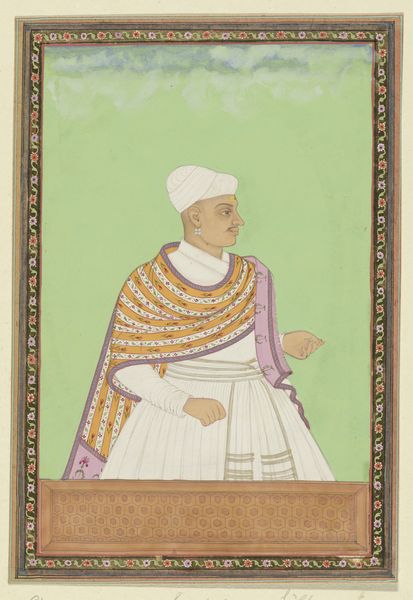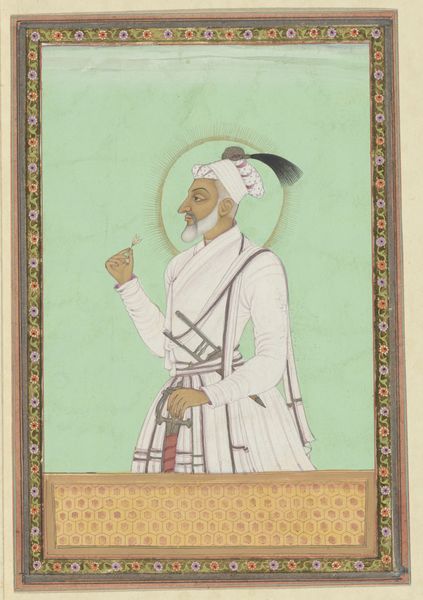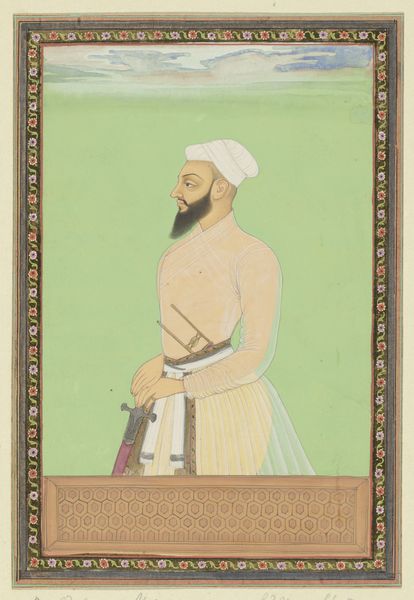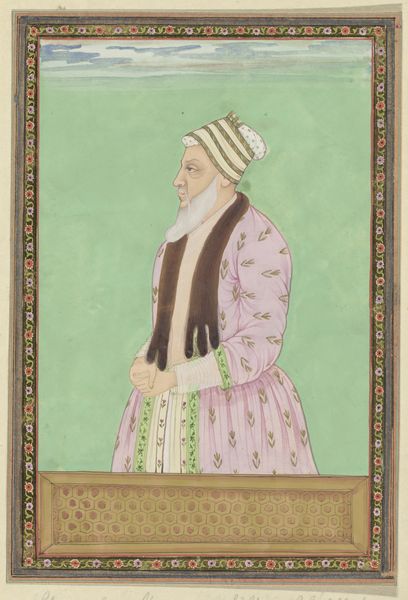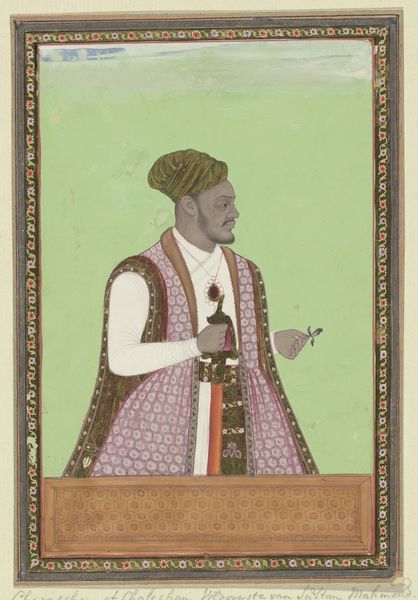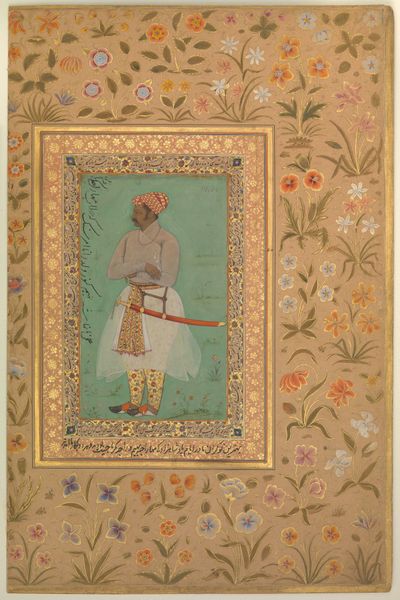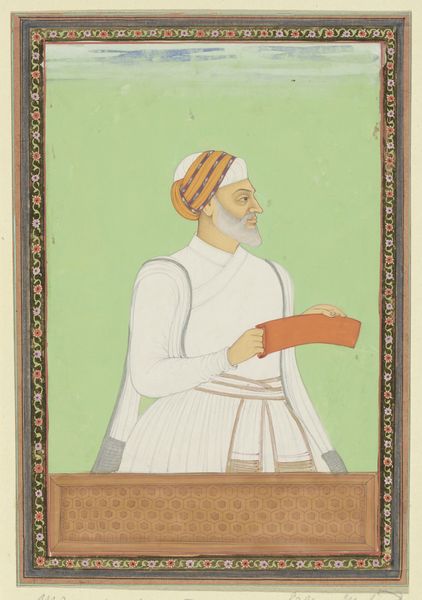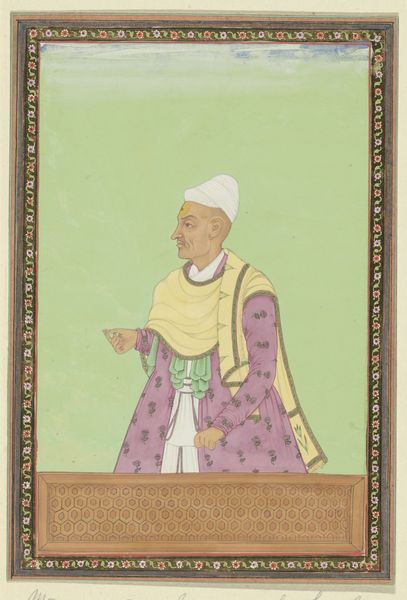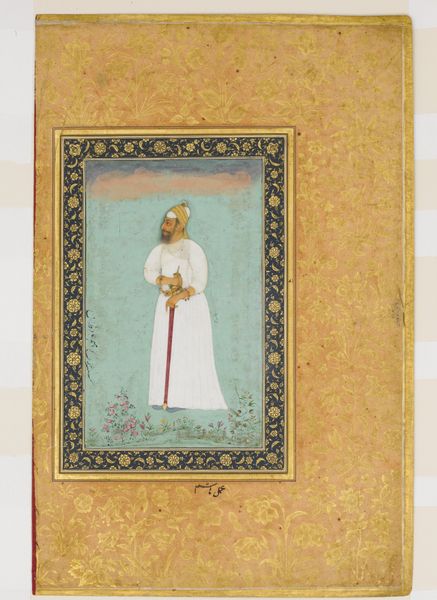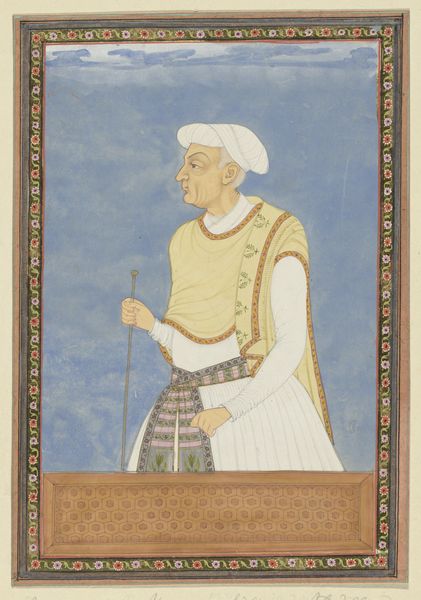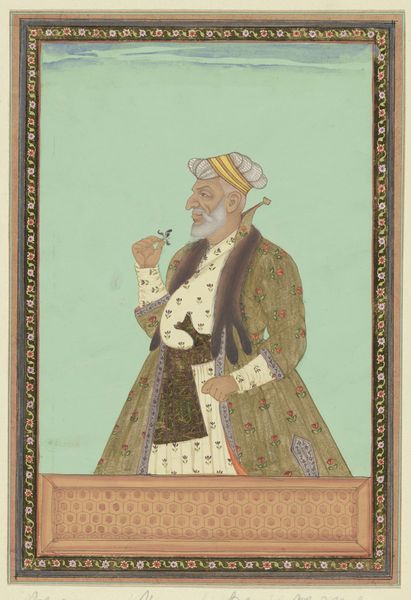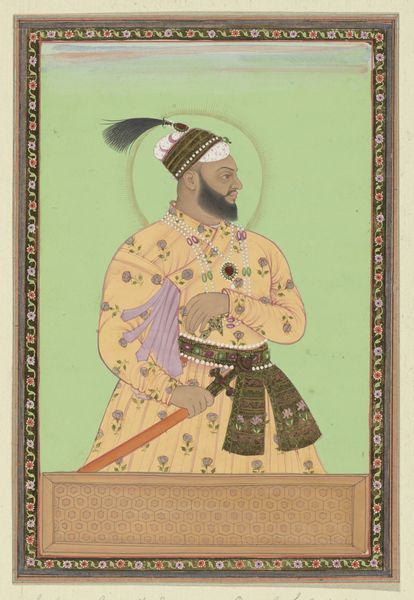
Portrait of Kuchal Oghlan: Folio from Salim's Album 1570 - 1625
0:00
0:00
painting, watercolor
#
water colours
#
painting
#
figuration
#
watercolor
#
islamic-art
#
miniature
Dimensions: Folio: H. 9 3/16 in. (23.4 cm) W. 5 7/8 in. (15 cm) Miniature: H. 5 in. (12.7 cm) W. 2 11/16 in. (6.9 cm)
Copyright: Public Domain
Editor: Here we have "Portrait of Kuchal Oghlan: Folio from Salim's Album" made sometime between 1570 and 1625 by Nanha. It’s a watercolor painting and quite small. I’m struck by how understated it feels, a lone figure set against a pale green background. How do you interpret this work, given its historical context? Curator: It’s fascinating, isn’t it? The very act of creating a portrait within the Mughal court held layers of meaning. While seemingly straightforward, we must consider it as a conscious construction of identity and power dynamics. How does the depiction of Kuchal Oghlan, his clothing, stance, and even his walking stick, speak to his position within the court? Editor: That’s interesting. The subject’s posture seems rather humble. Does this reflect his actual social standing, or could it be a deliberate choice by the artist to convey a specific message? Curator: Exactly! Mughal portraiture wasn’t about capturing a neutral likeness. Consider the artist's intention in choosing such muted colors and a simplified background. Nanha was likely trying to say something about Oghlan’s role. This challenges us to consider the representation of age and wisdom within a society often focused on youth and strength. Editor: So, it's not just a portrait, but a commentary on social hierarchies and values? Curator: Precisely. And remember, these album pages circulated within a very specific, elite audience. The act of viewing this image was a social act. What dialogues might it have sparked amongst the viewers of the time, regarding class, gender, and notions of leadership? Editor: I never considered it that way, I just looked at it from a design angle. That gives me a new way of appreciating art history, and accounting for the multiple layers of social messaging being transmitted. Curator: Indeed, every detail—every brushstroke—offers clues into understanding the past and interrogating the present.
Comments
No comments
Be the first to comment and join the conversation on the ultimate creative platform.
